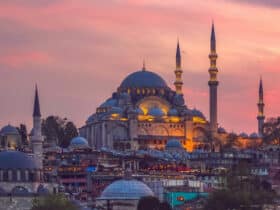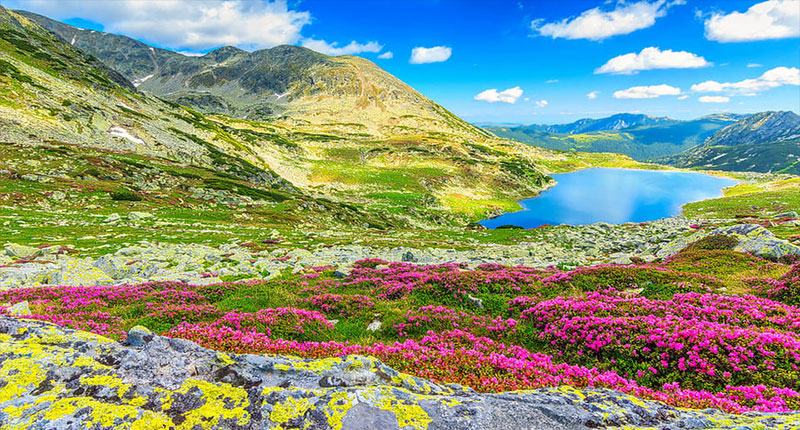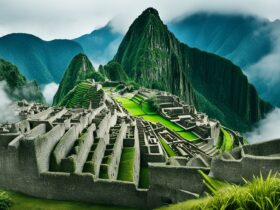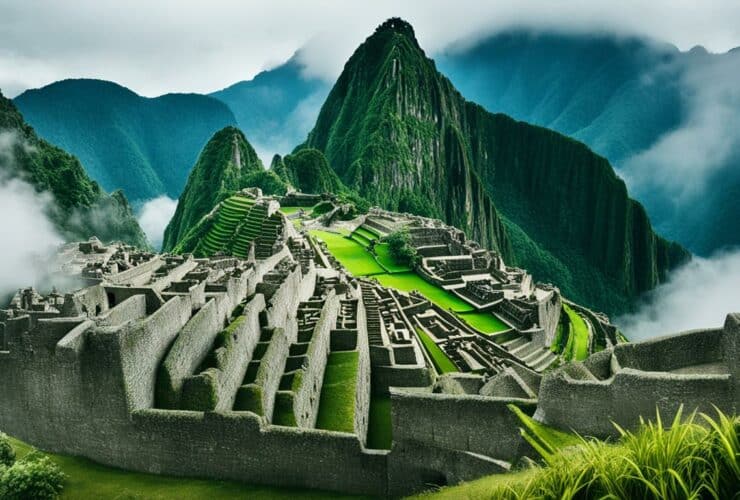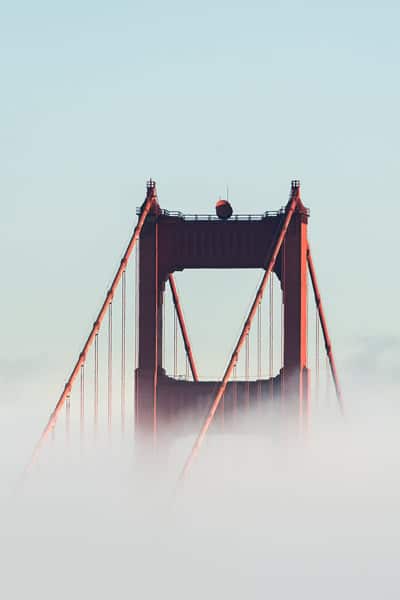The Valley of Flowers National Park is a mesmerizing destination located in the state of Uttarakhand, India. Nestled in the majestic Western Himalayas, this enchanting park offers a unique and breathtaking experience for nature enthusiasts and adventure seekers alike. Spread across an area of approximately 87.5 square kilometers, the park is renowned for its vibrant alpine meadows, diverse flora, and awe-inspiring landscapes. Let’s embark on a journey to explore the natural beauty of the Valley of Flowers National Park.
Tucked away in the Garhwal region of Uttarakhand, the Valley of Flowers National Park is a UNESCO World Heritage Site that has captivated visitors for decades. The park was established in 1982 with the aim of preserving its unique floral diversity and fragile ecosystem. With its stunning meadows, snow-capped peaks, and gushing streams, the Valley of Flowers has become a paradise for nature lovers and botany enthusiasts.
Historical Significance of the Park
The history of the Valley of Flowers dates back to the 19th century when it was discovered by British mountaineers. Legends and folklore also surround the park, with local tales describing it as the mythical place where Lord Hanuman found the magical herb “Sanjivani” to revive Lord Rama’s brother, Lakshmana, in the Hindu epic Ramayana. The park’s serene and mystical ambiance further adds to its historical allure.
Ecological Importance of the Valley of Flowers
The Valley of Flowers National Park boasts an exceptional ecological significance. It serves as a crucial corridor for the migration of various wildlife species and harbors a diverse range of medicinal plants and herbs. The park’s unique microclimate, created by the surrounding mountains, nurtures a delicate balance of ecosystems, making it a valuable research site for botanists and scientists.
Flora and Fauna Diversity
One of the main attractions of the Valley of Flowers is its incredible floral diversity. The park is home to over 600 species of flowering plants, including several rare and endangered varieties. During the monsoon season, the meadows burst into a kaleidoscope of colors, adorned with vibrant flowers such as orchids, poppies, marigolds, and primulas. The park also supports a rich variety of fauna, including Himalayan black bears, snow leopards, musk deer, and numerous bird species.
Best Time to Visit
The Valley of Flowers National Park is open to visitors from June to October, with July and August being the prime months to witness the blooming extravaganza. During this period, the monsoon showers blanket the valley, breathing life into the dormant seeds, and transforming the landscape into a paradise of blossoms. However, it is essential to check weather conditions and road accessibility before planning a trip.
How to Reach the Valley of Flowers
Reaching the Valley of Flowers National Park requires a bit of effort, but the journey itself is part of the adventure. The nearest town to the park is Joshimath, which is well-connected to major cities in India. From Joshimath, one can undertake a picturesque trek of approximately 16 kilometers to reach the park’s entry gate at Govindghat. The final leg of the journey involves a 3.7-kilometer trek from Govindghat to Ghangaria, the base camp for exploring the valley.
Trekking and Adventure Opportunities
The Valley of Flowers offers an exhilarating experience for trekking enthusiasts. The trek from Ghangaria to the valley is a moderate-level hike that rewards visitors with breathtaking views of the surrounding mountains, waterfalls, and alpine meadows. The trek is a sensory delight, with the fragrant aroma of wildflowers permeating the air and the melodious chirping of birds creating a symphony of nature.
Exploring the Valley’s Alpine Meadows
As you step into the Valley of Flowers, you will find yourself surrounded by a vast expanse of alpine meadows stretching as far as the eye can see. These meadows are adorned with a myriad of flowers, forming intricate patterns and gradients of colors. Walking through the meadows, you will encounter carpets of blue irises, golden lilies, pink rhododendrons, and countless other floral delights. The sheer beauty of the landscape is bound to leave you spellbound.
Rare and Endangered Species
The Valley of Flowers is a sanctuary for numerous rare and endangered plant species. Some of the notable floral species found here include the Brahmakamal (Saussurea obvallata), Himalayan Blue Poppy (Meconopsis aculeata), and Cobra Lily (Arisaema tortuosum). These delicate flowers have adapted to survive in the harsh mountain environment, making their presence even more remarkable.
Captivating Waterfalls and Rivers
The Valley of Flowers is also adorned with gushing waterfalls and meandering rivers that add to its ethereal charm. The Pushpawati River, originating from the glaciers, flows through the valley, creating picturesque cascades and crystal-clear pools. One of the notable waterfalls in the vicinity is the majestic Hemkund Waterfall, which is a popular spot for nature lovers and photographers.
Ethereal Beauty of the Valley in Monsoon
The monsoon season unveils the true splendor of the Valley of Flowers. The rain showers breathe life into the dormant seeds, and the entire landscape transforms into a vibrant canvas. The mist-covered mountains, the glistening petals of the flowers, and the refreshing scent of the earth combine to create a magical ambiance. Exploring the valley during the monsoon is a truly enchanting experience that allows you to witness nature’s artistic prowess.
Photography Tips for the Valley of Flowers
Capturing the beauty of the Valley of Flowers through photography requires a keen eye and some essential tips. Firstly, carry a wide-angle lens to capture the vastness of the meadows and the surrounding mountains. Secondly, make use of the soft morning or evening light to add a touch of warmth and depth to your images. Lastly, pay attention to the details, such as the delicate patterns on flower petals or the reflection of the mountains in a tranquil stream.
Conservation Efforts and Challenges
Preserving the fragile ecosystem of the Valley of Flowers National Park is of utmost importance. The park authorities, along with environmental organizations and local communities, have been actively involved in conservation efforts. However, the park faces challenges such as human interference, unsustainable tourism practices, and climate change. It is crucial for visitors to tread lightly, follow the park’s guidelines, and contribute to its conservation.
Nearby Attractions and Excursions
While the Valley of Flowers itself is a mesmerizing destination, there are several nearby attractions and excursions that are worth exploring. One such attraction is Hemkund Sahib, a sacred Sikh pilgrimage site located at an altitude of 4,329 meters. The serene Hemkund Lake and the Gurudwara (Sikh temple) offer a tranquil retreat amidst the mountains. Another popular excursion is the Badrinath temple, one of the Char Dham pilgrimage sites, known for its spiritual significance and architectural grandeur.
Conclusion
The Valley of Flowers National Park is a true gem nestled in the lap of the Himalayas. Its vibrant meadows, rare flora, and serene landscapes make it a paradise for nature lovers and adventurers. Exploring this natural wonder is an experience that immerses you in the beauty and tranquility of the mountains. So, pack your bags, put on your trekking shoes, and get ready to witness the awe-inspiring natural beauty of the Valley of Flowers.
FAQs (Frequently Asked Questions)
- Is there an entry fee to visit the Valley of Flowers National Park?
- Yes, there is an entry fee for visitors. The details can be obtained from the park authorities.
- Are there any accommodation options available near the park?
- Yes, there are several guesthouses and hotels available in Ghangaria, the base camp for visiting the Valley of Flowers.
- Can I visit the Valley of Flowers during winter?
- No, the Valley of Flowers National Park remains closed during winter due to heavy snowfall and extreme weather conditions.
- Are there any restrictions on photography in the park?
- Photography is allowed in the park, but it is important to follow the guidelines and not disturb the flora and fauna.
- Is it necessary to hire a guide for trekking in the Valley of Flowers?
- While it is not mandatory, hiring a guide is recommended for a safe and informative trekking experience.




